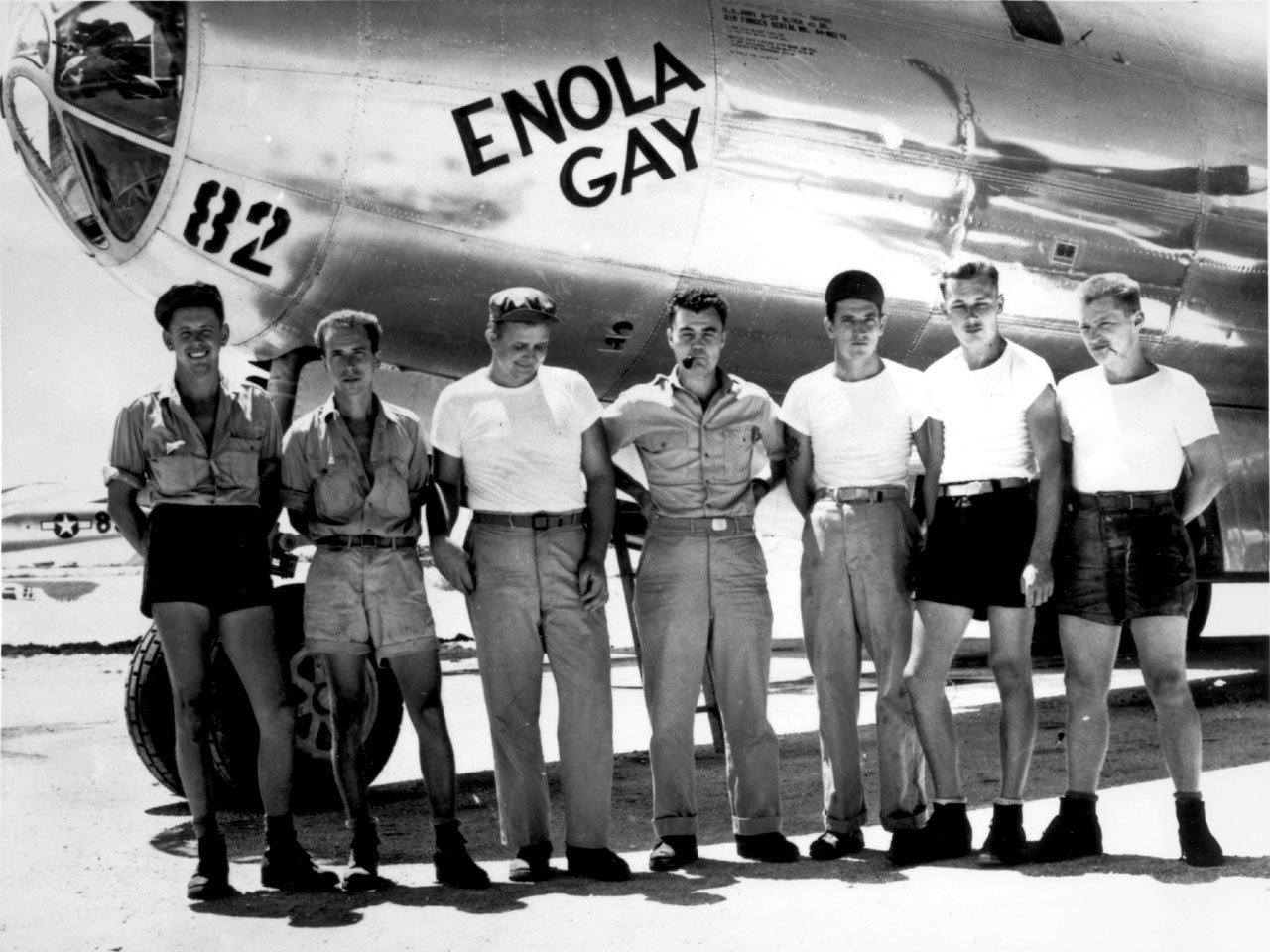
The Enola Gay dropped the “Little Boy” atomic bomb on Hiroshima. Paul Tibbets (center) can be seen with six of the aircraft’s crews. Photo courtesy of Wikimedia Commons.
On Aug. 4, 1945, Maj. Gen. Curtis LeMay approved Operation Centerboard I, a decision that ultimately forced the Japanese to surrender and forever changed the world. Two days after his approval, pilots boarded the Enola Gay, the callsign for their B-29 bomber, and lifted off from the Pacific island of Tinian en route for Hiroshima.
At 8:15 a.m., the lone plane in the sky carrying the 9,000-pound uranium-enriched atomic bomb — known as “Little Boy” — released from the bomb bay and floated by parachute, detonating the equivalent of 12,000 to 15,000 tons of TNT over the populated city.
“It was very much as if you’ve ever sat on an ash can and had somebody hit it with a baseball bat,” recalled Navigator Theodore Van Kirk, as he described the shockwave. Life that existed before was annihilated, and 70,000 of the 76,000 total buildings were destroyed — 48,000 blown into non-existence. The explosion immediately killed an estimated 60,000 to 80,000 people, and the nuclear fallout in the following years is believed to have killed some 200,000 more people as a result of severe burns, trauma, radiation exposure, and cancer.
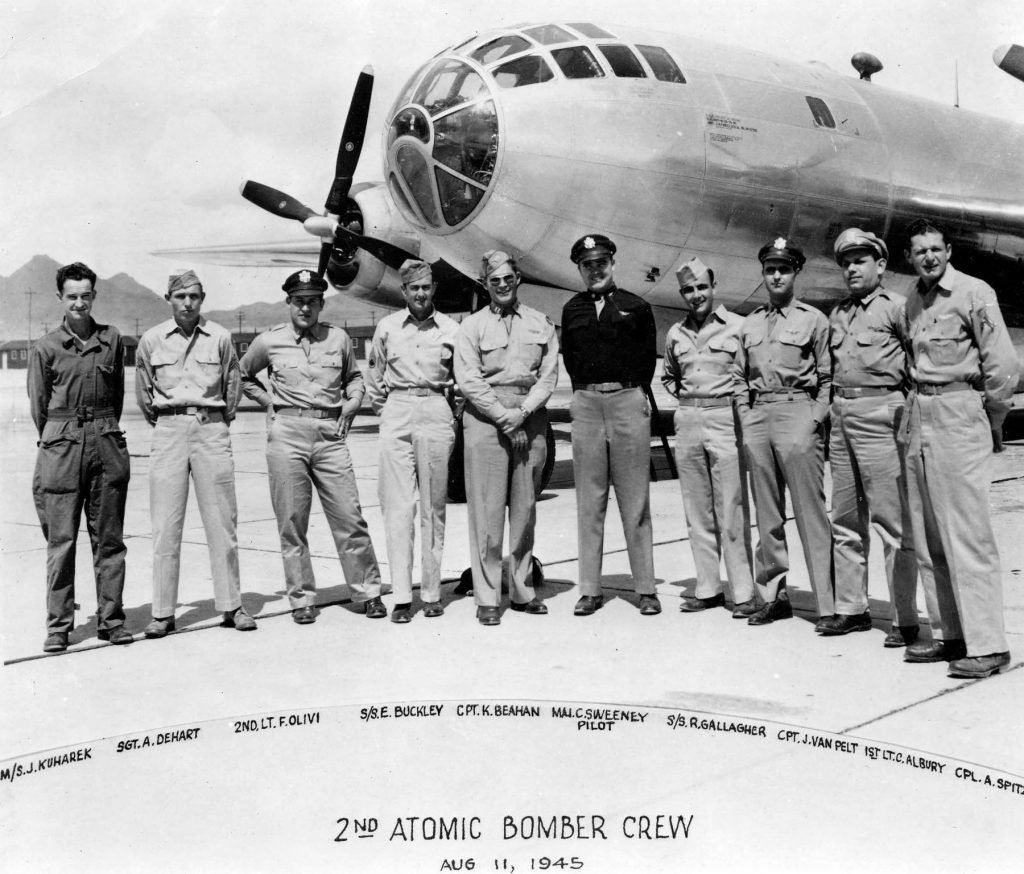
A day later, after no sign of surrender from the Japanese, the decision was made to use the second atomic bomb — “Fat Man.” The target was originally not the city of Nagasaki, but that of Kokura, the location of Japan’s largest munitions depot. On Aug. 9, 1945, bad weather and thick clouds forced the pilots to deviate and travel to their secondary target, where citizens of Nagasaki experienced the same hell that occurred three days prior.
“Suddenly, the light of a thousand suns illuminated the cockpit,” remembered “Bockscar” co-pilot Fred Olivi. “Even with my dark welder’s goggles, I winced and shut my eyes for a couple of seconds. I guessed we were about seven miles from ‘ground zero’ and headed directly away from the target, yet the light blinded me for an instant.”
After the plume of the second explosion cleared the skies and the Japanese surrender ended World War II, the world questioned how anyone could ever recover after two cities were turned into ash. On the 75th anniversary of the bombing of Hiroshima, Coffee or Die looks back at the lesser known aspects of the cataclysmic event that destroyed the lives of hundreds of thousands of people and forever changed the world.
“The Cry Baby Scientist”

Robert Oppenheimer, the man known as the “Father of the Atomic Bomb,” had months of preparation and test results to predict the impact of dropping a nuclear bomb over a populated city as he and his team developed the two atomic bombs that were used over Hiroshima and Nagasaki. But the physicist, along with 155 scientists chosen to work under the top-secret program famously known as “The Manhattan Project,” had second thoughts. They signed a petition that opposed using nuclear weapons in a military capacity.
When Oppenheimer met with President Harry Truman in his Oval Office in October 1945, months after pondering the destruction of his own creation, he told him, “Mr. President, I feel like I have blood on my hands.” Truman’s face scrunched and his anger grew to a fury as he told Secretary of State Dean Acheson, “I never want to see that son of a bitch in my office again.”
As Truman recounted the story, the blame equally shared by the two of them, he often referred to Oppenheimer as “the cry baby scientist.”
Censorship In The Press
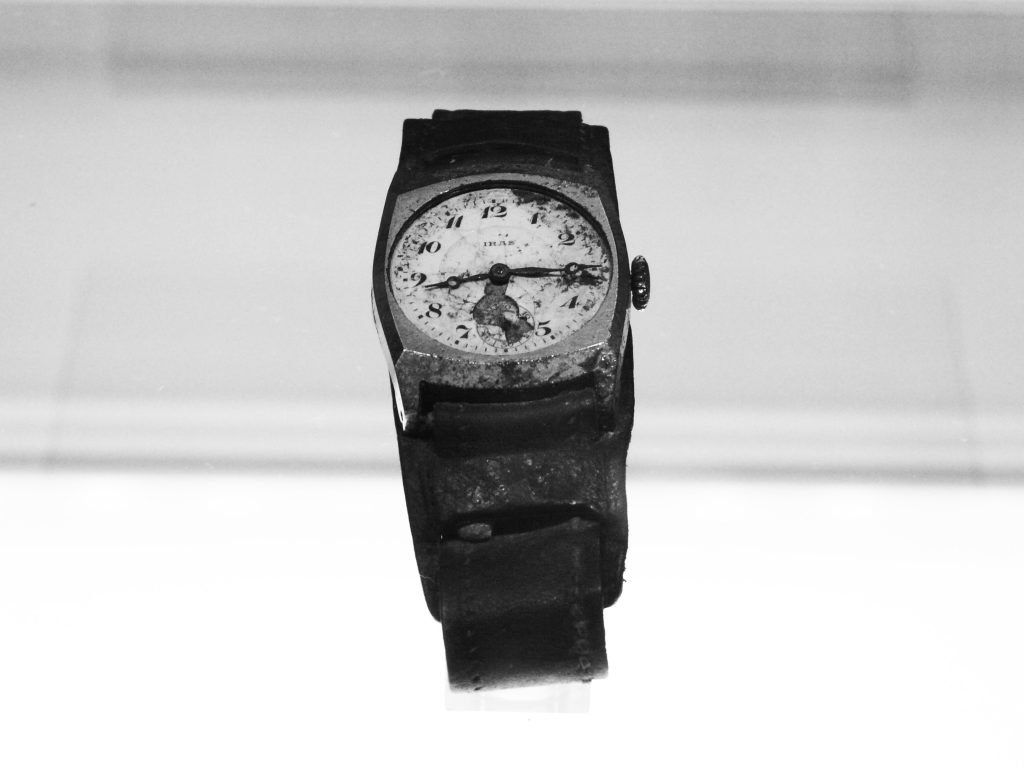
The biggest news story of the century was censored. In fact, much of the information during World War II was censored. However, the prime focus concerning the nuclear explosions over Japan was the suppression of evidence regarding radiation or radioactivity. Journalists were silenced, access to medical reports were limited, and American officials confiscated materials collected from Japanese inspectors during the immediate fallout. Gen. Douglas MacArthur issued a press code that permitted the publication of photographs and print in relation to the bombings, and it remained in effect until 1952.
The purpose of the censorship was that the military didn’t want the atomic weapon to be associated with chemical warfare. Nonetheless, Australian journalist Wilfred Burchett avoided the censors when he sent his report to London using Morse code. Burchett was the first foreign journalist to visit Hiroshima after the bombings. The London Daily Express published his story on Sept. 5, 1945, with the headline “The Atomic Plague.”
“Hiroshima does not look like a bombed city,” Burchett wrote. “It looks as if a monster steamroller had passed over it and squashed it out of existence.”
Eyewitness Accounts & Survival
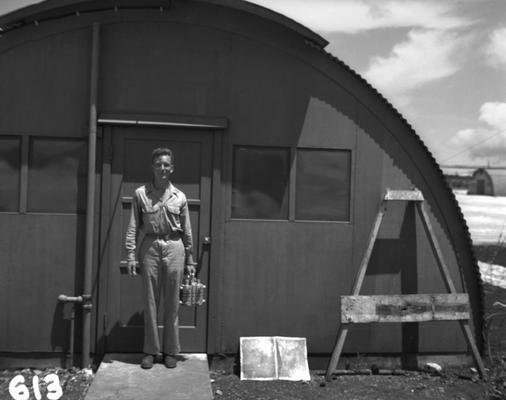
American physicist Lawrence H. Johnston, one of the scientists to work under the helm of the Manhattan Project, was the only eyewitness of all three atomic explosions (the other was the Trinity test). While Johnston viewed the extraordinary violent detonations from a distance, Tsutomu Yamaguchi, a 29-year-old Japanese naval engineer experienced both blasts in person.
Walking on his morning commute to work, Yamaguchi stopped and looked toward the sky. He heard the roar from the B-29’s engines, then watched a bomb deploy a parachute. The sky flashed the brightest light he had ever seen as he dove into a ditch before the shockwave engulfed his entire being. The eruption was so violent that it spun up tornado-like winds that hurled his body into a nearby potato patch.
After somewhat recovering his wits, he spent the night in an air raid shelter, and the following day he went to the train station. The bridges ceased to exist, and en route he had to cross a river pass and swam through a cluster of floating dead bodies. As he boarded the train amongst several other burned survivors, he traveled overnight to his hometown of Nagasaki.
On Aug. 8, he recuperated in the hospital and embraced his wife and child who hardly recognized him. The next day he returned to work to inform his bosses of what had occurred at Hiroshima. After escaping one atomic bomb, the second was even more devastating.
“I thought the mushroom cloud had followed me from Hiroshima,” he told the The Independent. Somehow, for the second time, he survived the blast, but the radiation in multiplied doses had lingering effects that caused his hair to fall out and relentless bouts of vomiting. Surprisingly, he lived until he was 93 years old and died of stomach cancer in 2010.
The Atom Bowl
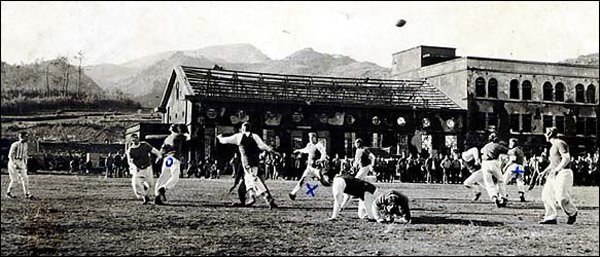
While citizens of Japan weren’t fully aware of the effects of radiation and what impact it had on the body until later in life, US soldiers didn’t fully understand it either. On New Year’s Day 1946, Chicago Bears standout Bill “Bullet” Osmanski stepped onto another gridiron that looked more like a scene from the movie Mad Max than a packed football stadium filled with screaming fans. Osmanski and other Marines from the 2nd Marine Division fielded one team and squared off against Lt. Angelo Bertelli, a Heisman Trophy winner and former Notre Dame quarterback. The ceremonial football game became known as “The Atom Bowl,” and it was held in the nuclear wasteland a few miles from “ground zero” in Nagasaki.
More than 2,000 Devil Dogs took to the bleachers at the “Atomic Athletic Field No. 2” to watch Osmanski’s “Isahaya Tigers” defeat Bertelli’s “Nagasaki Bears” 14-13. The halftime festivities included music by the Marine Corps band and “Japanese girl cheerleaders.” The rules were altered for safety, including banning tackle football in favor of two-hand touch because of the shattered glass and small debris on the field. The world’s first and only football game to take place in the rubble of an atomic bomb crater was played by a bunch of Marines trying to boost their spirits before they went home.

Matt Fratus is a history staff writer for Coffee or Die. He prides himself on uncovering the most fascinating tales of history by sharing them through any means of engaging storytelling. He writes for his micro-blog @LateNightHistory on Instagram, where he shares the story behind the image. He is also the host of the Late Night History podcast. When not writing about history, Matt enjoys volunteering for One More Wave and rooting for Boston sports teams.
BRCC and Bad Moon Print Press team up for an exclusive, limited-edition T-shirt design!
BRCC partners with Team Room Design for an exclusive T-shirt release!
Thirty Seconds Out has partnered with BRCC for an exclusive shirt design invoking the God of Winter.
Lucas O'Hara of Grizzly Forge has teamed up with BRCC for a badass, exclusive Shirt Club T-shirt design featuring his most popular knife and tiomahawk.
Coffee or Die sits down with one of the graphic designers behind Black Rifle Coffee's signature look and vibe.
Biden will award the Medal of Honor to a Vietnam War Army helicopter pilot who risked his life to save a reconnaissance team from almost certain death.
Ever wonder how much Jack Mandaville would f*ck sh*t up if he went back in time? The American Revolution didn't even see him coming.
A nearly 200-year-old West Point time capsule that at first appeared to yield little more than dust contains hidden treasure, the US Military Academy said.












